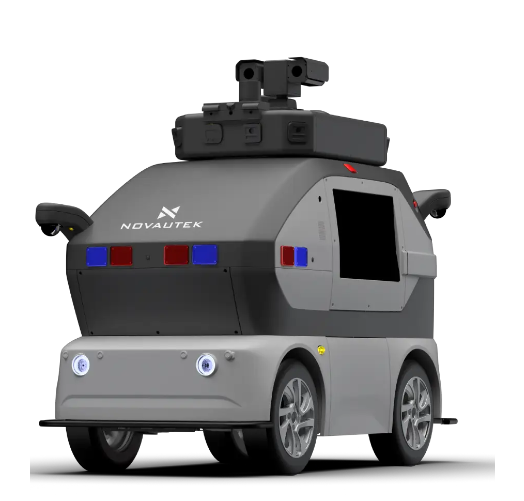The Dawn of Advanced Robotics Revolution
We stand at the cusp of a transformative era where intelligent robots are fundamentally reshaping our understanding of automation and human-machine interaction. These sophisticated machines, equipped with artificial intelligence and advanced sensors, are no longer confined to repetitive assembly line tasks but are increasingly capable of complex decision-making and adaptive learning. The impact of this technological evolution extends far beyond manufacturing, touching everything from healthcare to space exploration.
As intelligent robots continue to evolve, they're bringing unprecedented levels of efficiency, precision, and innovation to industries worldwide. These machines can now recognize patterns, respond to environmental changes, and even collaborate with humans in ways that were once confined to science fiction. The integration of machine learning algorithms and sophisticated hardware has created a new generation of robots that can tackle complex challenges while continuously improving their performance.
Revolutionary Applications Across Industries
Manufacturing and Production Innovation
The manufacturing sector has witnessed a dramatic transformation through the implementation of intelligent robots. These advanced systems can now handle intricate assembly processes, quality control, and even predictive maintenance. Unlike their predecessors, modern intelligent robots can adapt to production changes in real-time, optimize their movements for maximum efficiency, and work safely alongside human colleagues.
Smart factories employing intelligent robots have reported productivity increases of up to 30%, while significantly reducing error rates and workplace accidents. These robots can perform detailed inspections, identify defects invisible to the human eye, and maintain consistent quality standards around the clock. The ability to process vast amounts of data allows them to predict maintenance needs and prevent costly downtimes.
Healthcare and Medical Breakthroughs
In healthcare, intelligent robots are revolutionizing patient care and surgical procedures. Robotic surgical systems, guided by artificial intelligence, enable surgeons to perform minimally invasive procedures with unprecedented precision. These systems can analyze patient data in real-time, providing crucial insights during operations and reducing recovery times significantly.
Beyond surgery, intelligent robots are transforming rehabilitation services, elderly care, and hospital logistics. They assist therapists in delivering personalized recovery programs, provide companionship to elderly patients, and ensure efficient medication distribution. The integration of these robots has led to improved patient outcomes and reduced healthcare costs.

Technical Advancements Driving Evolution
Artificial Intelligence and Machine Learning Integration
The backbone of intelligent robots lies in their sophisticated AI and machine learning capabilities. Modern robots utilize deep learning algorithms to process sensory input, make decisions, and improve their performance over time. This continuous learning ability enables them to handle increasingly complex tasks and adapt to new situations without explicit programming.
Neural networks and advanced pattern recognition systems allow these robots to understand their environment, recognize objects, and interact naturally with humans. The integration of natural language processing has further enhanced their ability to communicate and understand complex commands, making them more accessible and useful in various applications.
Sensor Technology and Environmental Awareness
Advanced sensor systems have dramatically improved the environmental awareness of intelligent robots. Modern robots incorporate multiple sensor types, including LIDAR, computer vision, force sensors, and tactile feedback systems. This comprehensive sensory input enables them to navigate complex environments, handle delicate objects, and ensure safe operation around humans.
The combination of sophisticated sensors and processing capabilities allows intelligent robots to make split-second decisions based on their surroundings. This enhanced awareness has opened new possibilities in applications requiring precise manipulation and real-time adaptation to changing conditions.
Economic Impact and Future Prospects
Market Growth and Investment Trends
The intelligent robotics sector has experienced exponential growth, with global investments reaching unprecedented levels. Market analysts project the industry to exceed $200 billion by 2025, driven by increasing adoption across various sectors. This growth is supported by declining hardware costs and improving return on investment metrics.
Companies implementing intelligent robots are reporting significant operational improvements, including reduced costs, increased productivity, and enhanced quality control. The economic benefits extend beyond direct automation advantages, creating new job opportunities in robot programming, maintenance, and system integration.
Workforce Evolution and Skill Requirements
As intelligent robots become more prevalent, the workforce is adapting to new roles and responsibilities. Rather than replacing human workers entirely, these systems are creating opportunities for upskilling and specialization. The demand for professionals who can program, maintain, and optimize robotic systems continues to grow.
Educational institutions and companies are developing specialized training programs to prepare workers for the automated future. This transformation is creating new career paths in robotics engineering, AI development, and system integration, ensuring that human expertise remains crucial in the age of intelligent automation.
Frequently Asked Questions
How do intelligent robots differ from traditional industrial robots?
Intelligent robots incorporate advanced AI and machine learning capabilities, allowing them to learn, adapt, and make decisions autonomously. Unlike traditional industrial robots that follow fixed programming, intelligent robots can respond to changes in their environment and improve their performance over time through experience.
What safety measures are in place for human-robot collaboration?
Modern intelligent robots are equipped with multiple safety systems, including advanced sensors, emergency stops, and force-limiting mechanisms. They are programmed to detect human presence and adjust their behavior accordingly, ensuring safe cooperation in shared workspaces.
How will intelligent robots impact employment in the future?
While intelligent robots will automate certain tasks, they are also creating new job opportunities in areas such as robot programming, maintenance, and system integration. The focus is shifting towards human-robot collaboration, where machines handle repetitive tasks while humans contribute their creativity and problem-solving skills.

